Already last year I digged up into macro photography with magnification of 1.0 and higher dedusting the solid build mechanical beauty macro bellows Nikon PB-6. After some test shots with my new mirrorless Nikon Z7 I was not really sure that this old technology is still useful with mega-pixel chips and cropping in lightroom. Therefore, I decided to check this a bit more systematically. It is an odd couple, the Nikon PB-6 was introduced 1983 and discontinued whereas the Nikon Z7 hit the market 25 years later in 2018. Hence, the Nikon FTZ adapter makes it fit.
How does the Nikon PB-6 bellows function?
Here I assume you understand the handling of macro and bellows, as there are plenty in the internet:
- Copy of Nikon PB-6 manual
- Allan Walls‘ nice intro with D7500
- Nathaniel Stephan’s technical detail compilations
- Ken Smith’s demo of the aperture and reverse features
Set-up for macro magnification test
As test object I picked a sheet of millimeter paper from my school time and marked some scaling information with a pencil.
This makes the measurement of the macro magnification factor a bit easier. The practical resolution is about 1 mm. Just by counting the small red boxes in x- and y-direction it is easy to calculate the macro magnification. The overall setting looks like this.
I picked my small lens collection – from new to very old:
- AF Nikkor 50mm f/1.8D
- AF Nikkor 85mm f/1.8D
- AF-S VR Micro-Nikkor 105mm f/2.8G IF-ED
- Rodenstock Rodagon 50mm f/2.8
- Miranda Auto EC 50mm f/1.4
- Soligor Tele-Auto EC 135mm f/2.8
Here are the macro magnification results, which differ a bit from Nikon PB-6 manual in the right most column. I get slightly higher factors with the Nikon Z7 even though the chip is slightly smaller 35.9 x 23.9 mm² than SLR.
| Macro Magnification | Nikon handbook | ||
| Lens | @48mm | @208mm | @208mm |
| Nikkor 50mm | 1.1 | 4.3 | 4.0 |
| Nikkor 50mm reverse | – | 4.1 | 3.9 |
| Nikkor 85mm | 0.7 | 2.8 | 2.5 |
| Nikkor 105mm | 1.7 | 4.0 | 3.0 |
| Rodenstock 50mm | 1.0 | 4.3 | – |
| Miranda 50mm | 4.4 | – | |
| Soligor 135mm | 1.7 | – |
Which advantage has PB-6 bellows compared to macro lens?
Comparing Nikkor 105mm at closest distance of 314mm and highest macro magnification 1.1 with Nikkor 50mm on Nikon PB-6 at 208mm with macro magnification 4.3 shows more details and is still sharp in the middle. The biggest advantage of the bellows is the high magnification factor and focus handling. It comes with the great slider on the rail which makes focusing so much easier on a tripod. If I use a macro lens without bellows, I rather move the object to focus, not the camera.
Here is an example with low magnification 7 stacked shots with Nikkor 50mm (reverse Nikon PB-6 at 48 mm, Focus infinity, f5.6, macro magnification 1.4) compared to a single shot with the Nikkor 105mm (f11, macro magnification 1.1). I do not see any advantage for the bellows. All the effort using the bellows is only worth if you go on higher macro magnification starting with 2.0.
The performance of the Nikkor 105mm without PB-6 is astonishing sharp, straight lines, and great contrast. If the magnification requirement is < 1.1 the macro lens without bellows is still the best optical and practical option.
Which lens performs best on PB-6 bellows?
Nikkor 50mm, Rodenstock 50mm, Miranda 50mm are best if we go for highest magnification with 4.3, 4.3 ,4.4 respectively. But overall, I see a slight advantage with the Nikkor 50mm focused to infinity with magnification 4.0 in terms of sharpness and contrast. This is also the last reasonable working distance. Getting closes is a lightning nightmare.
Has the reverse mounting advantages?
The Nikon PB-6 has such a nice and simple mechanism for reversing lenses – just for that reason I did the sample shots. But for the Nikkor 50mm I did not see any advantages, rather a bit more haze. There is no better sharpness nor better colors in the reverse setting.
How does the macro lens perform on the PB-6 bellows?
As my Nikkor 105mm is AF-S the missing aperture ring makes it almost useless. You can manually or arbitrary select an aperture by hand but you cannot keep it stable nor do you know which f-stop you finally captured.
The sharpness in the middle is great but fading out on a flat surface at the corners – which is a bit unfair test as the distance increases and therefore it is out of focus by definition. But I rather stick with the natural fit of the 50mm AF-D and if I need more distance I will pick the 85mm AF-D with magnification up to 2.4. But I assume that one of the old Nikkor Micro lenses like 55mm and 105mm with aperture ring will do better. The 200mm micro is probably not so useful as it only reaches a macro magnification of 1.0 according to Nikon PB-6 handbook, which is odd as it reaches that out of the box.
What is the advantage of reproduction lenses?
The Rodenstock Rodagon 50mm 2.8 performs very well – in particularly the corner sharpness with closed aperture is better than any other lens here in the test. I assume that the Rodenstock higher priced Apo-Rodagon-N and Apo-Rodagon-D perform much better. I also read a lot good results with Nikon El-Nikkor 50 mm f/2.8N . Another option is the Schneider Kreuznach Apo Digitar 4.5/90. This is no surprise as these kind of lenses were designed to have magnification factors > 1.0 and are sharp on flat surfaces which is nice for photo stacking.
How does this compare to standard lenses?
You might argue that this is a lot of overhead for macro. Just use my standard zoom and crop. Well, here is what you get with the flower scene from above Nikon Z7 Nikkor 28-70@70mm closest focus f8.0:
and cropped in:
and compare this with macro magnification 4.3 even without photo stacking:
macro magnification 4.3
Final conclusion
Nikkor 105mm micro at focus 314mm on Nikon PB-6 at 208 mm
There is a clear advantage in order to reach macro magnification higher than 1.0 with bellows like the Nikon PB-6 on a mirrorless camera like the Nikon Z7. There is now way to crop macro lens pictures down to the details you can get with the bellows at macro magnification of more than 2.0. With photo stacking you get really amazing results.
But this comes with a lot of disadvantages:
- depth of field is really thin: without photo stacking almost useless and focusing even with the great support of Nikon Z7 is not easy;
- much more handling effort: as you need a solid photo studio like set-up;
- only still objects: moving or even flying objects are impossible;
- needs a lot of light: bright sunlight or multiple light sources are a must as the bellows distance at 208mm eats a lot of light on its way;
- more finishing work: reviewing the pictures and photo stacking the final scene requires a lot more time, like 10 Min to hours in the darkroom back in last century;
- missing lens CPU connection: the old bellows do not transmit the data from the lens to the camera and you cannot set-up the lens from the camera. That requires not only a lot manual settings like f-stop at the lens but also a lot of manual documentation and EXIF tweaking afterwords.
If you consider buying a used or new bellows I recommend to pick one with build in „lens connectivity“ like the Novoflex automatic series although I think the maximum extension of 116mm is little bit too short – here I used the Nikon PB-6 with 208mm.
My macro conclusion:
- for most macro shots I will use the Nikkor 105mm micro
- for the very view „full-macro-hobby-days“ I will get the Nikon PB-6 bellows with either Nikkor 50mm at close distance and magnification factor 4.0 or Nikkor 85mm for more object distance and magnification factor 2.8
- the best lens is the one you have with you – even the Nikkor Z 24-70 f/4.0 can do nice pictures
- finally, I will wait for the arrival of the Nikkor Z 105mm Micro S in 2021 according to Nikon Z roadmap before any new investments
Now it is up to you! What is your opinion?
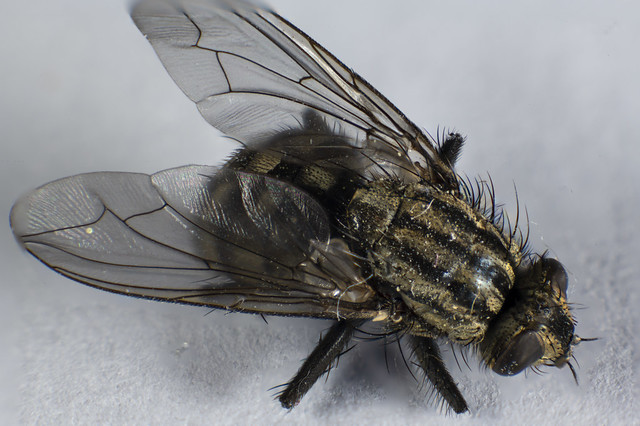


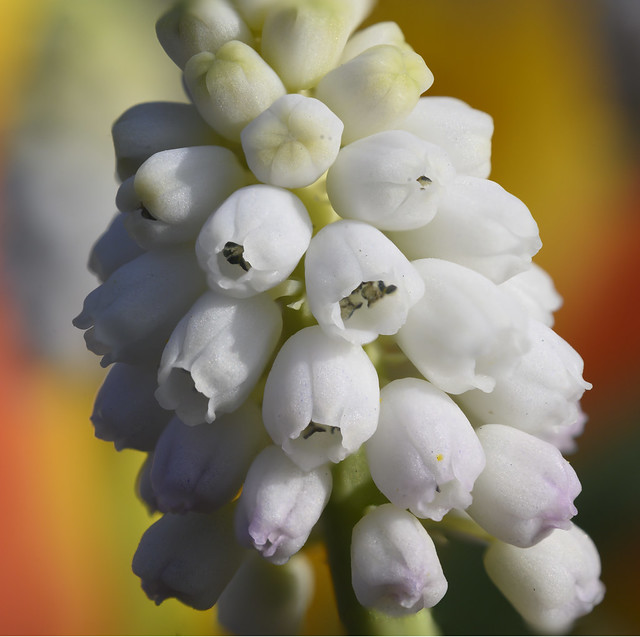
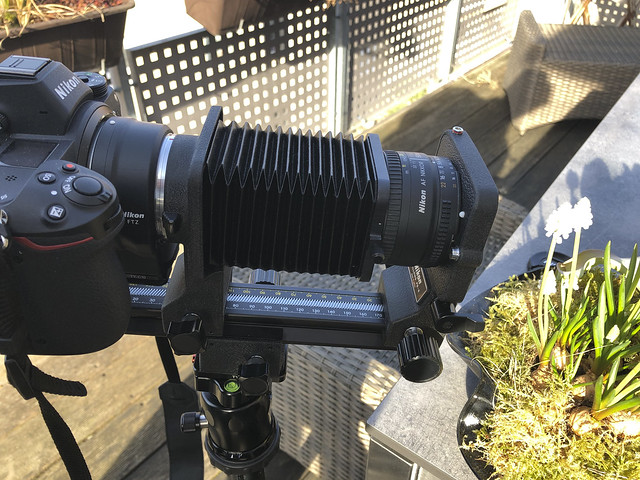
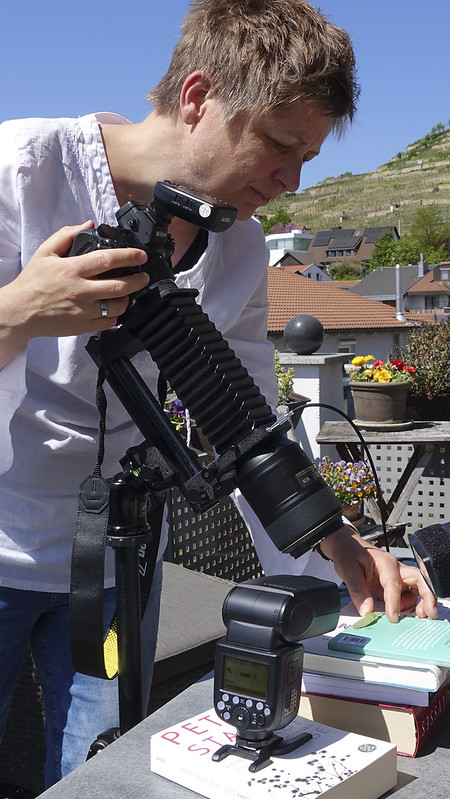
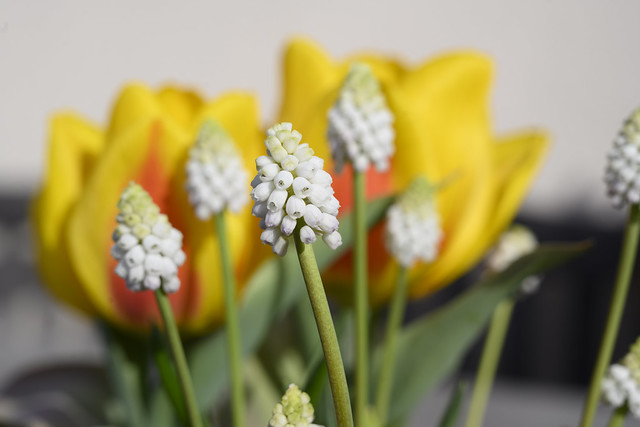

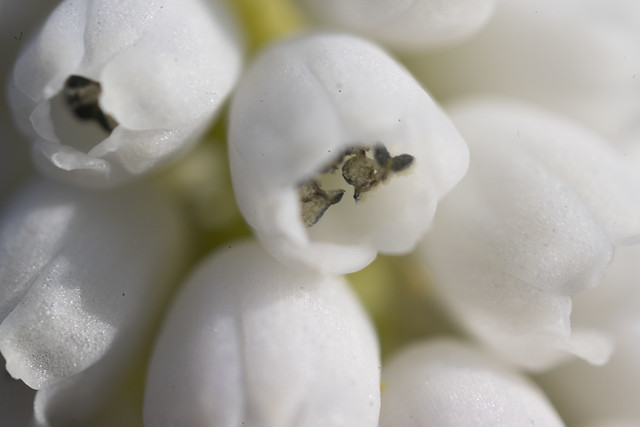

A very thorough and detailed evaluation of the PB-6 bellows! I would add one point related to using the bellows at full extension. At 208mm, the effective aperture of your lens will be five times greater that the lens aperture. An aperture of f/8 becomes f/40 and diffraction softening is inevitable.
Thank you for posting this excellent article!
I am really happy to say it’s an interesting post to read.
Best regards,
Boswell Hessellund
Hi, Very good article. I hope you will publish again sort
of post. Thank you!
Best regards,
Boswell Duke
Thank you so much. At last, I found an article which I am searching for
a long time. I hope it will help me .
Best regards,
Lunding Henneberg
Best view i have ever seen !